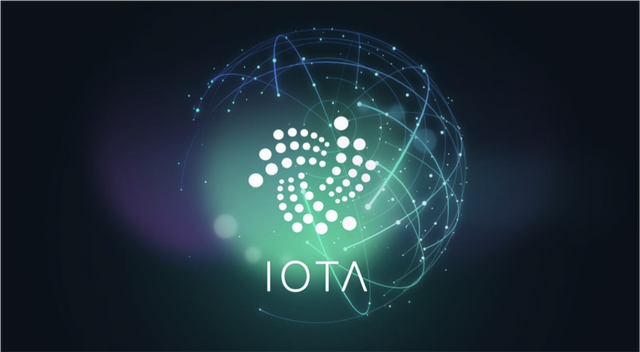
At the point when Bitcoin was first discharged to the world in 2009, it began a transformation. Individuals asserted that the blockchain would take care of numerous issues and that it has endless of uses. Blockchains undoubtedly have exceptionally intriguing properties and you can take in about them in this post here.
In any case, they have one major restriction and that will be that doesn't scale extremely well. This is precisely the issue that the makers of IOTA needed to illuminate. Rather than utilizing a blockchain, IOTA utilizes something many refer to as a DAG or TANGLE. DAG is another way to say "Directed Acyclic Graph" and it's a capacity framework where singular things connect to each other. "Directed" implies that the connection between things dependably has a bearing and "Non-cyclic" implies that you can't make circles inside this structure. This may sound confused, so how about we investigate a straightforward TANGLE.
Each square speaks to a solitary exchange and is likewise called a "site". Each site contains every one of the insights about the exchange, for example, the sender, the beneficiary and the measure of coins. It likewise has an association (bolts) to no less than two different exchanges. These are called "edges" and they approve the exchanges. Here is a case of a greater Tangle.
Close to the finish of our Tangle, we locate a couple of exchanges that don't have at least two approaching edges. This implies these exchanges are unverified. We additionally call these the tips of the tangle. Okay, now that we see a portion of the IOTA phrasing, how about we investigate how we can add another exchange to the tangle. We need to append our new exchange to one of the tips of the tangle.
A calculation chooses two of them aimlessly and ensures that the exchanges don't strife with each other. On the off chance that one of the tips is a phony exchange, it is overlooked and another tip is chosen. In the case of everything looks at, we connect our exchange to the two hints. This adds our exchange to the tangle and confirms the two different exchanges. Our exchange is currently part of the tangle and turns into another tip. :)
This strategy makes IOTA's tangle unfathomably adaptable. For each exchange that is added to the TANGLE, two others are being affirmed. This implies the system doesn't back off when there is a lot of new exchanges. Indeed, it really accelerates!

That is all awesome, however, how would we know we can put stock in an exchange?
In customary blockchains, individuals regularly utilize the number of affirmations to check regardless of whether a piece ought to be trusted.
Well IOTA has a comparable strategy. Each site has a weight. This number connotes the measure of work that a hub has done to make this exchange. At the end of the day: a higher number means the hub invested more energy doing the verification of-work for that exchange. Every exchange additionally has a total weight. This is its total possess weight in addition to the total of the weights of all exchanges that affirm this exchange. It appears to be very convoluted, yet it truly isn't. Here is a case of a Tangle where each exchange has a weight of 1.

We'll put the heaviness of an individual exchange in the base right of each square. Presently we should check how reliable this exchange is by figuring its combined weight. To do that, we aggregate up the heaviness of the two exchanges that have affirmed it. In any case, those exchanges were endorsed by other exchange also. So we keep summing up every one of these weights until the point when we get to the finish of the tangle. For this situation, the collective weight of the site is 13 or 11 for instance :). Exchanges with a high total weight are normally more established and have more straightforward or aberrant checks. So we can put stock in those exchanges all the more than others. So now you recognize what IOTA's TANGLE is and how functions. :)
In any case, how can it stack up against conventional blockchains?
Okay, the TANGLE illuminates two major issue's: adaptability and mineworkers. How about we talk about adaptability. As we've seen: IOTA's system turns out to be quicker when more exchanges happen. This implies IOTA can deal with very nearly a boundless measure of exchanges every second while conventional blockchains can just deal with a couple.

Be that as it may, there is another perspective to the versatility that a great many people appear to overlook and that is capacity. In a blockchain, you require a full duplicate of the chain before you can begin including new exchanges. At the present time, the Bitcoin blockchain is right around 150GB in size and continues becoming quick. Putting away this information isn't something each gadget can do and will get harder after some time. Particle's Tangle is considerably more lightweight. You needn't bother with a full duplicate of the tangle to include exchanges.
You just need a little piece of the tangle to make and check exchanges. This makes it substantially more future verification. Furthermore, finally,** IOTA** has - NO MINERS--. Normally mineworkers are there to make pieces and approve exchanges. For this diligent work, excavators take a charge from every exchange. In IOTA, no mineworkers imply NO FEES. Sending cash around is this totally free!
So now you know how IOTA's TANGLE functions, and how it looks at to normal blockchain innovation.
If you liked this post, please give it an upvote and follow me for more internet of value post.
Disclaimer: This article should not be taken as, and is not intended to provide, investment advice. Please conduct your own thorough research before investing in any cryptocurrency.
Spread the love...


